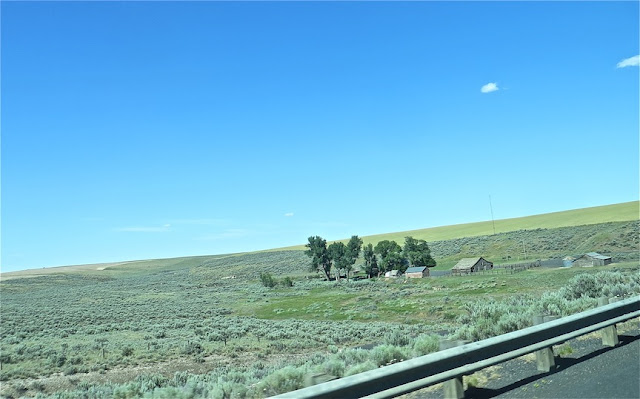The Hooper family was our neighbor in Cascade Valley, living in the house right behind us. They were rural poor people from South Carolina. Life was hard scrabble for them. I remember the daughter Patsy, and the mother very well. They had all of these new appliances, like a vacuum cleaner , washer dryer, and dishwasher, that had slots on them into which you were to put a quarter when you used them. Those quarters supposedly would add up to the monthly payment. When everything was repossessed, Mrs. Hooper said, "Oh well, we enjoyed them while we had them." My parents, who never bought anything on credit, were horrified!
I also remember my first recognition of product placement at their house. Mrs. Hooper had a bottle of Joy dishwashing detergent. I remember being surprised that the bottle was yellow, because TV was black and white, and I hadn't seen the color. When I saw it, I ran home, exclaiming excitedly to my mother, "Mrs. Hooper's got Joy!" My mother said, "Oh? What is she so happy about?" "No, JOY! Mrs. Hooper's got JOY " We always had a good laugh about that.
Another memory was that all of the children had blackened, almost non existent teeth, which made their smiles a little ghoulish. That was because they ate squares of laundry starch instead of candy (it was cheaper) and their teeth had rotted.
And, I remember Joe. He was older than me, a red headed, scrawny high school kid always in trouble, always a wheeler dealer. My sister says he would trade a stay kitten for a dog, then the dog for a goat, the goat for a cow, etc. He also set those heavy old wooden pins at the bowling alley for awhile. I was told to just stay out of his way. Depending on what you read, he joined the Navy at 17, served for two years, then joined the Army at nineteen.
The place where they hold the Farmers Market in Moses Lake is called McCosh Park It is the home to the only memorial plaque dedicated to Joe Ronnie Hooper, not only the most decorated Vietnam Soldier, but the most decorated solider in all of US History.


The internet is full of stories about Sgt. Joe R. Hooper, (or Captain, since he later joined the Reserves) who did two tours of duty in Vietnam, and whose acts of courage were unbelievable. Despite his troubled past, and his troubled time in the military, he was fearless in battle, and won the Congressional Medal of Honor ,Two Silver Stars, 6 Bronze Stars, and 8 Purple Hearts. He was credited with 115 enemy kills in ground combat, 22 of which were in 1968 outside of Hue in a fierce battle that took most of his unit. Some say he deserved many more medals, but the ones he was officially awarded put him ahead of Sgt. Alvin York of WWI and Audie Murphy of WW11.
Joe died at age 40, and again, depending on what you read, the cause was a cerebral hemorrhage, a stroke, an aneurism, or by hitting his head in a hotel room, the day after watching Spectacular Bid win the Kentucky Derby. He had been drinking, a behavior that followed him from an early age. He had been wined and dined by Presidents, met Queens, been on late night TV, etc., but couldn't adapt to life outside the combat zone. Some blame the fact he didn't get treatment for PTSD, or his alcohol addiction. But, as I say, his conduct followed a lifelong pattern.
There is a lot of controversy about why this decorated hero doesn't have more national recognition.
Unlike Sgt. York and Audie Murphy, very little is said about him. This memorial in Moses Lake
is the only one, with the exception of a Seattle Veterans hospital wing designated for addiction treatment.
Is he not honored because people still don't like thinking about the Vietnam War, or is it because Joe's life was not a hero's life?
He is buried in Arlington Cemetery, and there is a 2004 book out about him called, "The Forgotten Solider: The Story of Staff Sergeant Joe Ronnie Hooper, " by Peter Maslowski.
If I remember the stories from someone involved in getting this memorial built, they pushed to have it just be for Joe, but in the end, it had to be for all soldiers from the area.
The other plaque on this wall, to Congressional Medal of Honor recipient Jim Fleming, acknowledged his bravery as a helicopter pilot in rescuing a six man Green Beret Team from enemy fire. He was ahead of me in school, but I remember him. He made the military a career, and to my knowledge, he is still alive.





















































